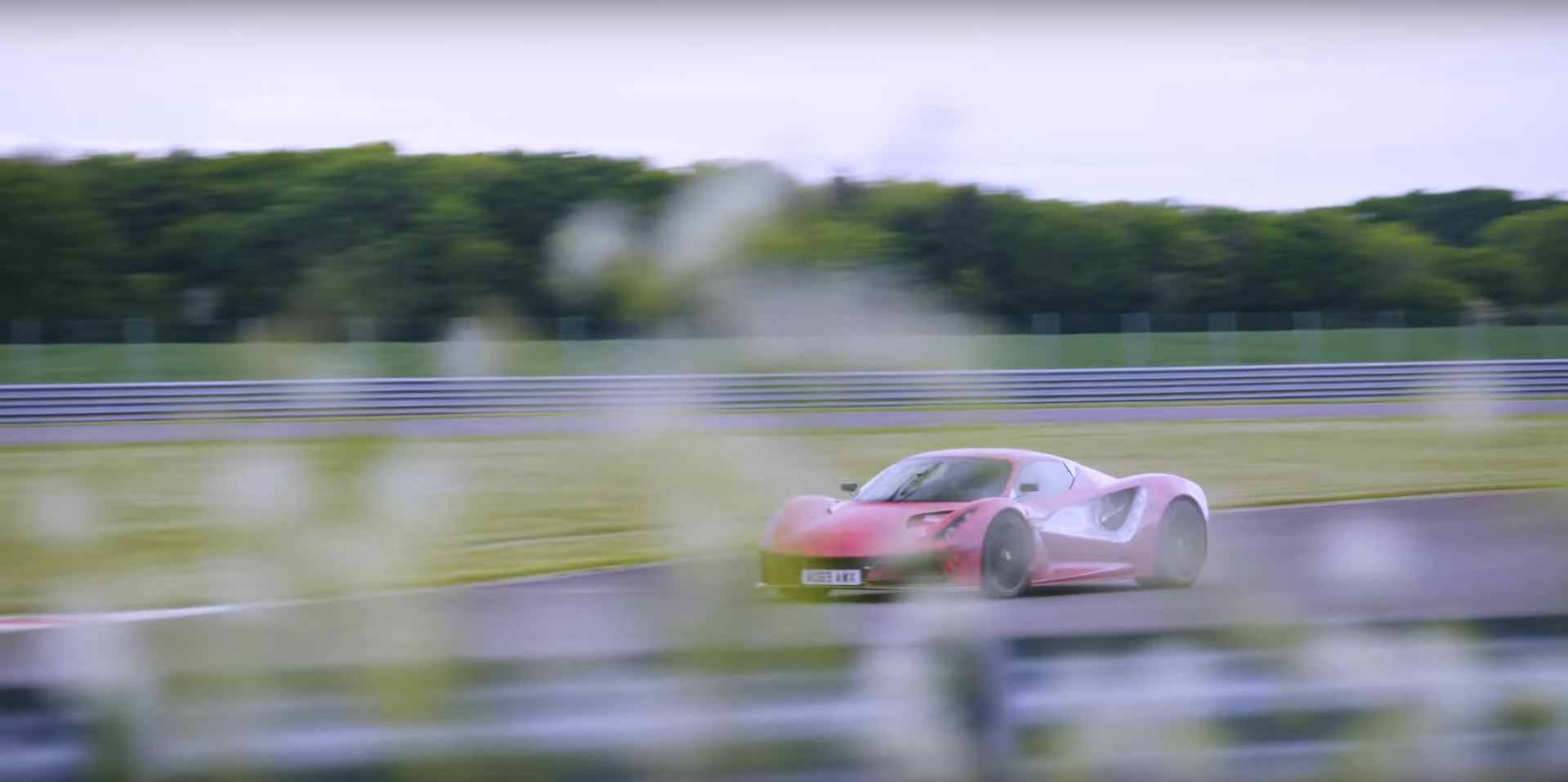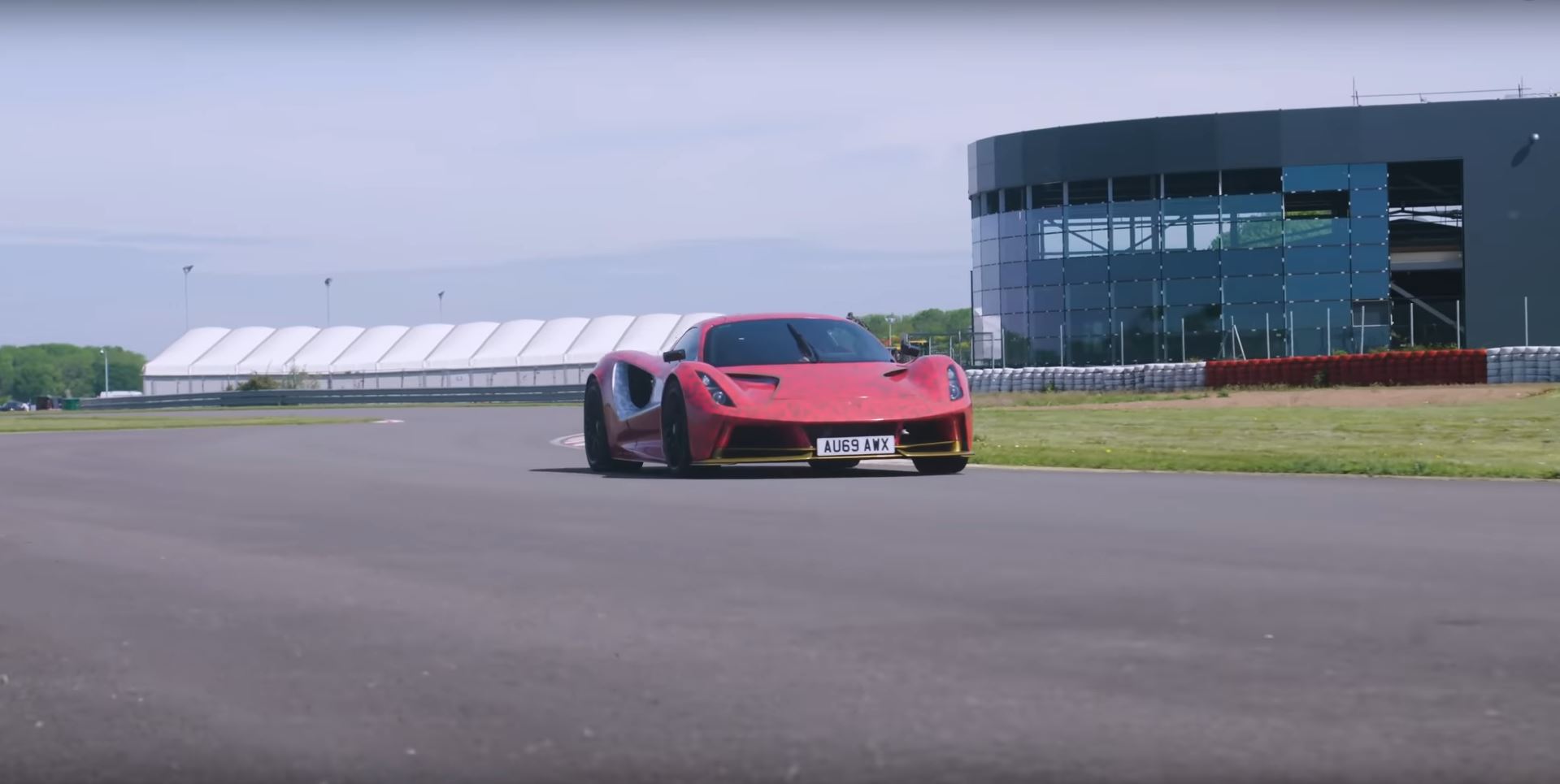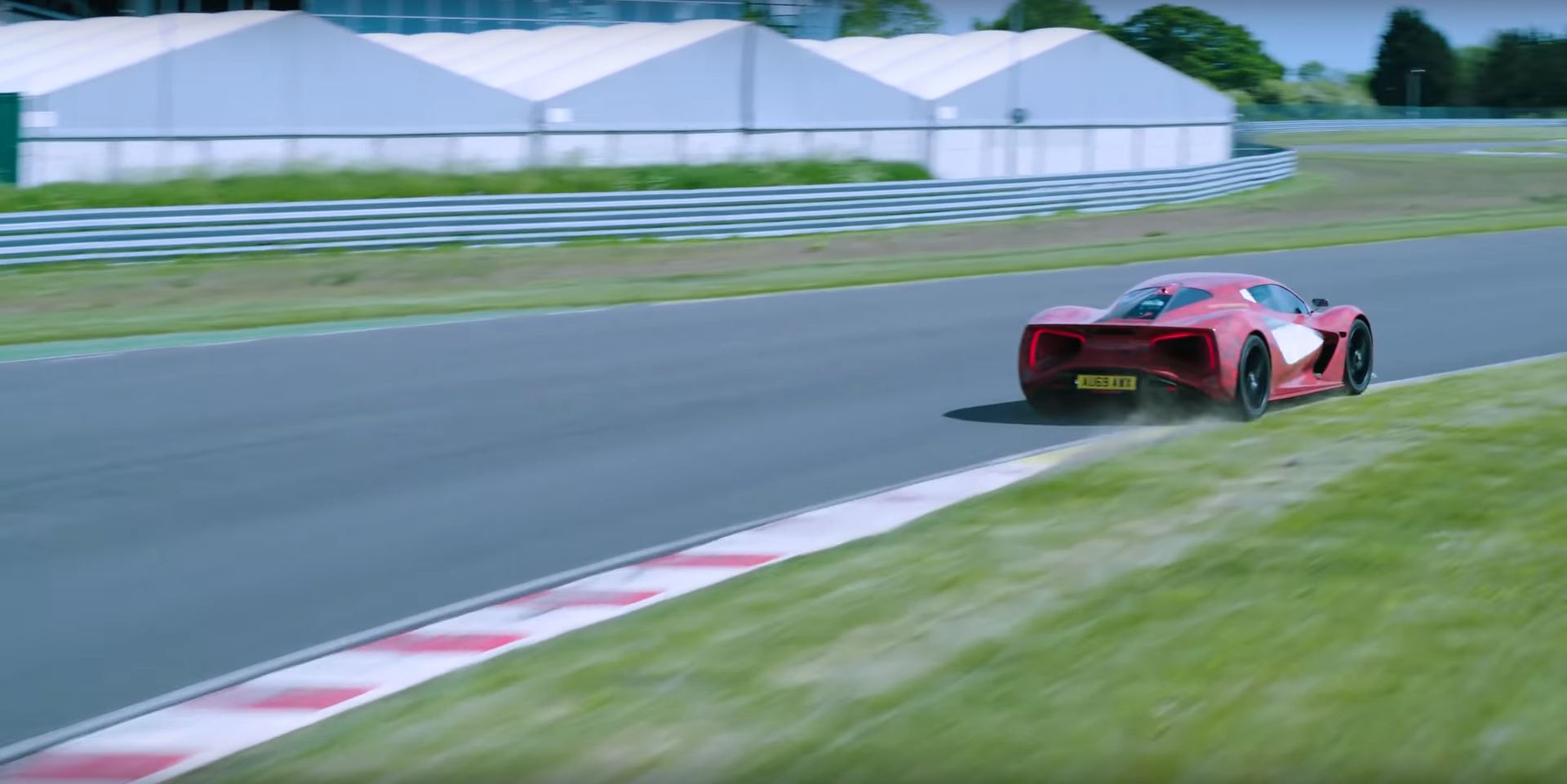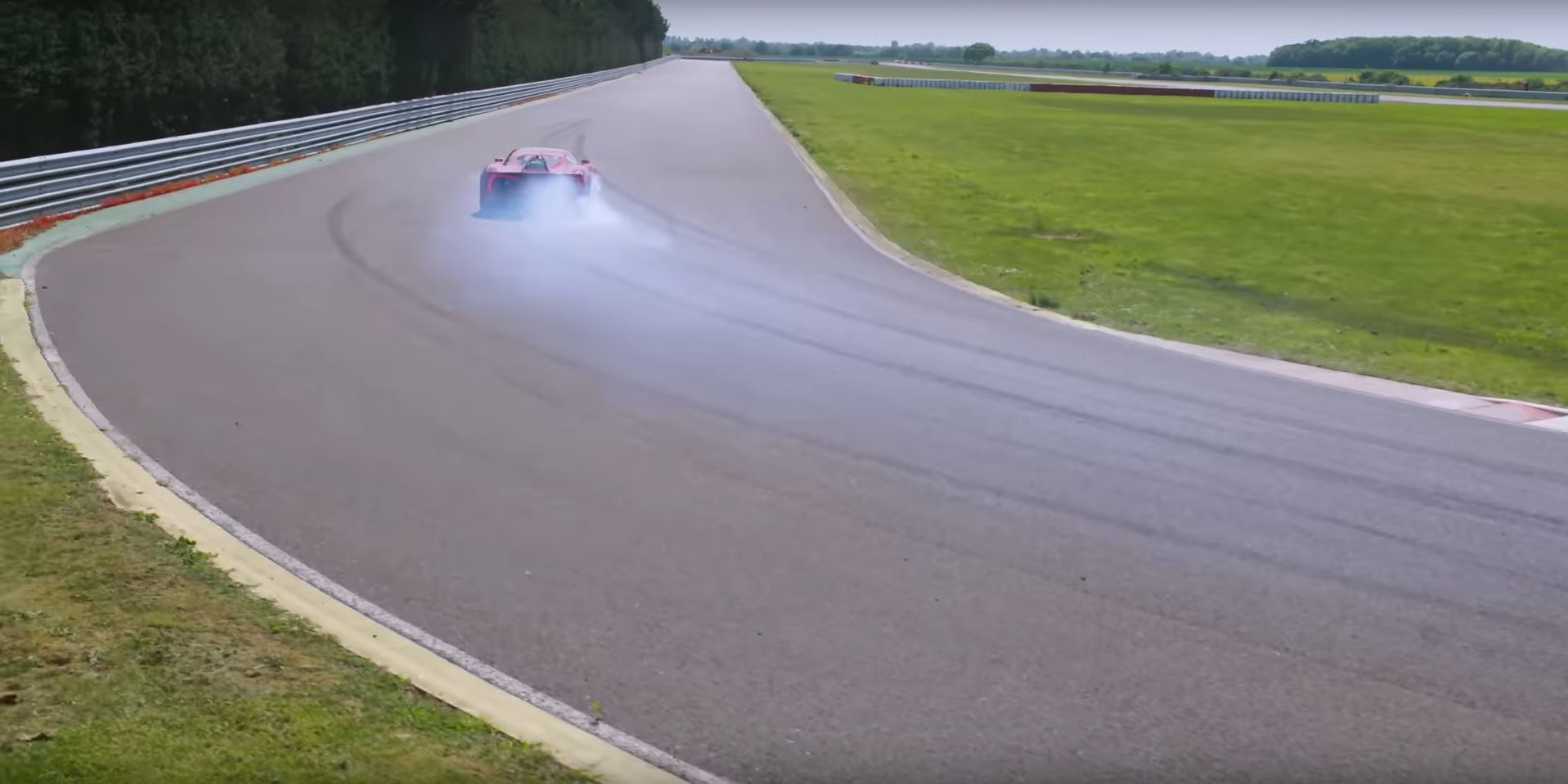With Lotus delaying the Evija from late 2020 to “sometime in 2021,” they’ve taken the opportunity to spend some extra time testing and developing their prototype vehicles.
Today, Lotus uploaded what is realistically the first true track footage, from the company and development team themselves, of the Evija EP2 second prototype out on the track at Hethel. This is an important race circuit, as not only does Lotus own it, but all of their best cars, such as the Evora, the Elise, the Exige, and others were developed at the track.
Shown off by Lotus Head of Vehicle Attributes for the Evija, Gavan Kershaw, the primary promotion of the video is the wide range of modes that the Evija can be set to. While the top-spec Track mode will give you all 2,000 BHP under your right foot, there are actually some pretty intelligent modes for what type of driving you’re doing.
The first mode shown off is Range mode. This reduces the car to “Around 1,000 horsepower,” as is said with a grin and a wink by Mr. Kershaw, and turns up the regenerative braking to give you inter-city levels of battery power. Also important is that this turns the front two motors from being active propulsion to kinetic energy capture generators, maximizing range.
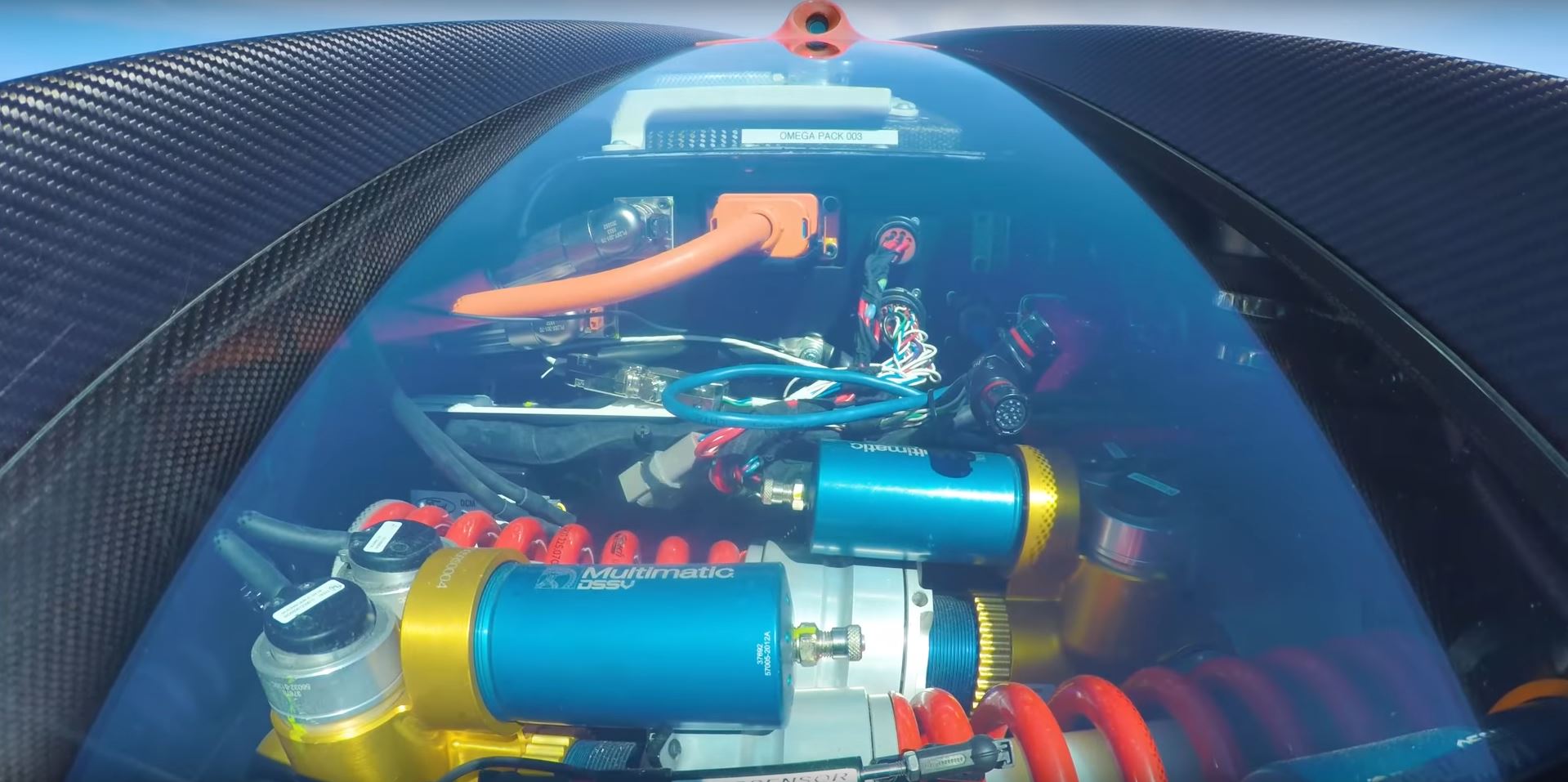
City mode is like Range mode, but actually turns down the regenerative braking and puts the rear wing into a drag efficient position. This is so that there is no sudden inertial differences when coming off the power, which could surprise an unaware driver. As well, it highlights that Lotus is making the car not just to be a speed demon, but the world’s first “truly daily driver hypercar.”
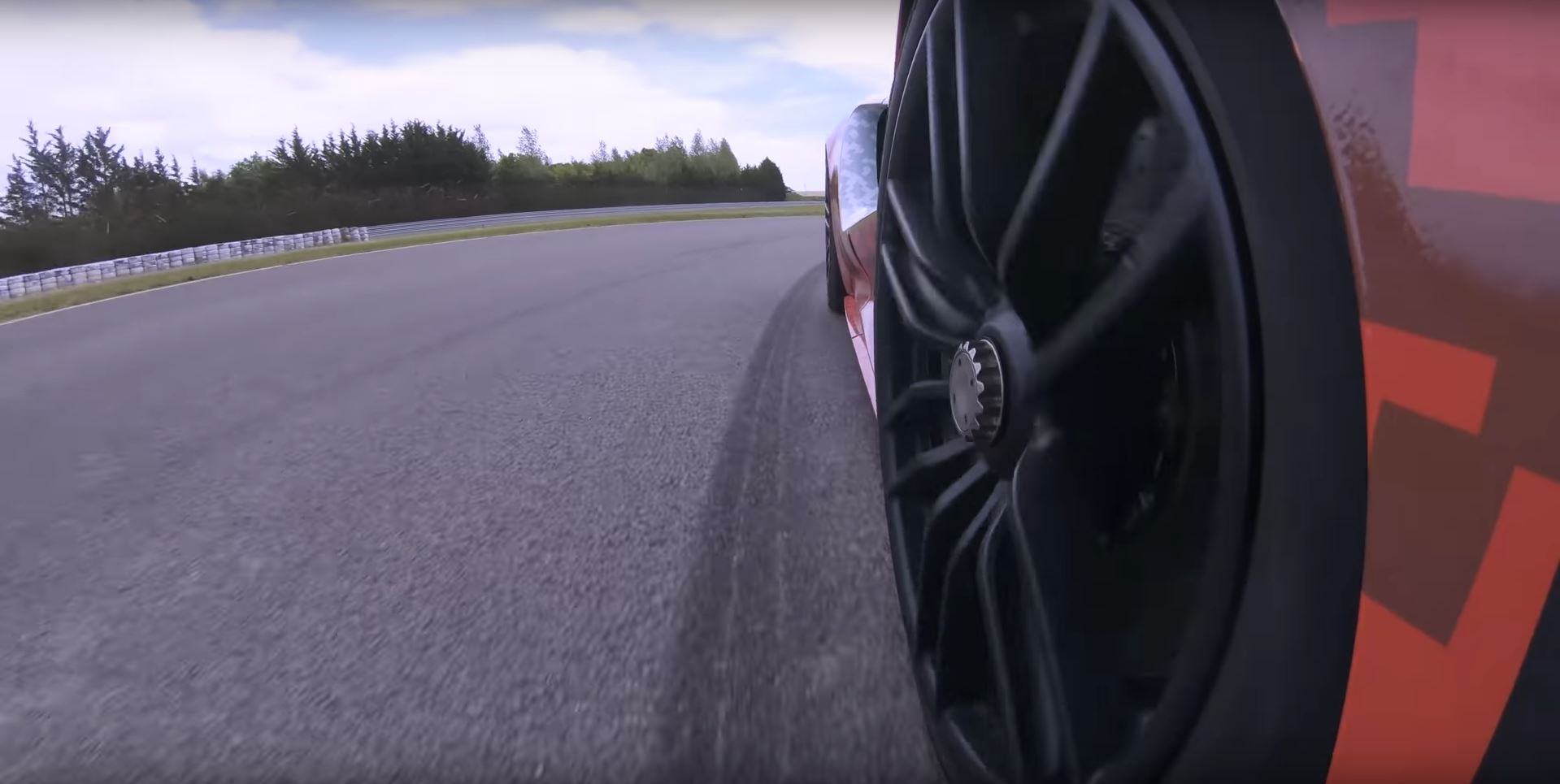
Tour mode is where the hypercar part starts to come alive. Power is upped to 1,400 BHP, torque is ramped up to allow for faster and harder pulls out of corners, yet the all-wheel-drive system will intelligently decide which wheels to power, sometimes cruising along in RWD, and when cornering, seamlessly adding the front motors and using the Evija’s torque vectoring to pull the car hard into the corner and helping it accelerate out the other side.
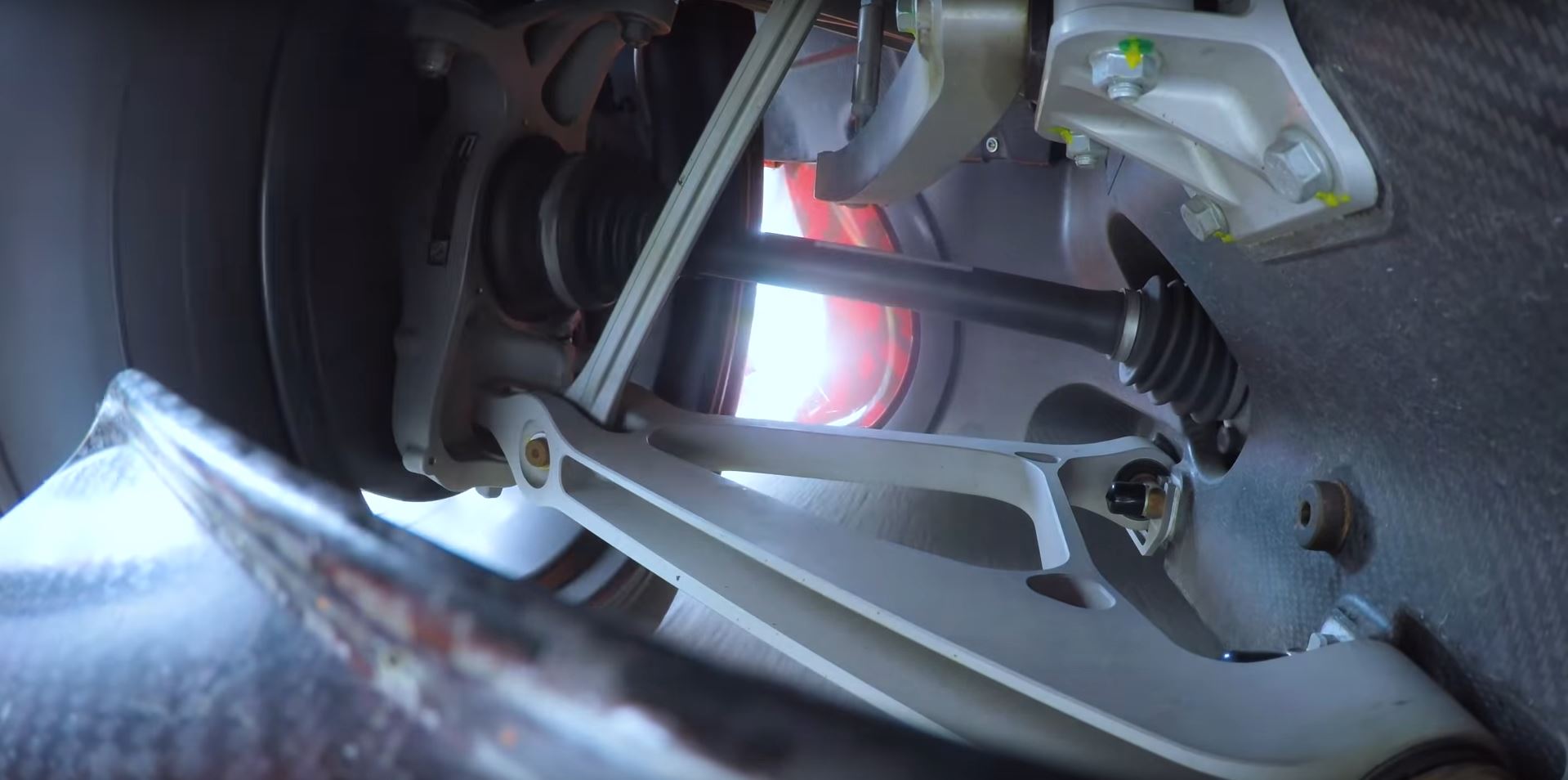
Sport mode is where the dial is turned up to 10. 1,700 BHP, sport stability control (SSC) activates, and the AWD system is on all the time. The most impressive part is that the SSC allows for you to absolutely punch the power halfway through a corner, and the car will simply use torque vectoring and the steering angle to haul the car out of the corner and accelerate with, as Mr. Kershaw says, “pure thrust.”
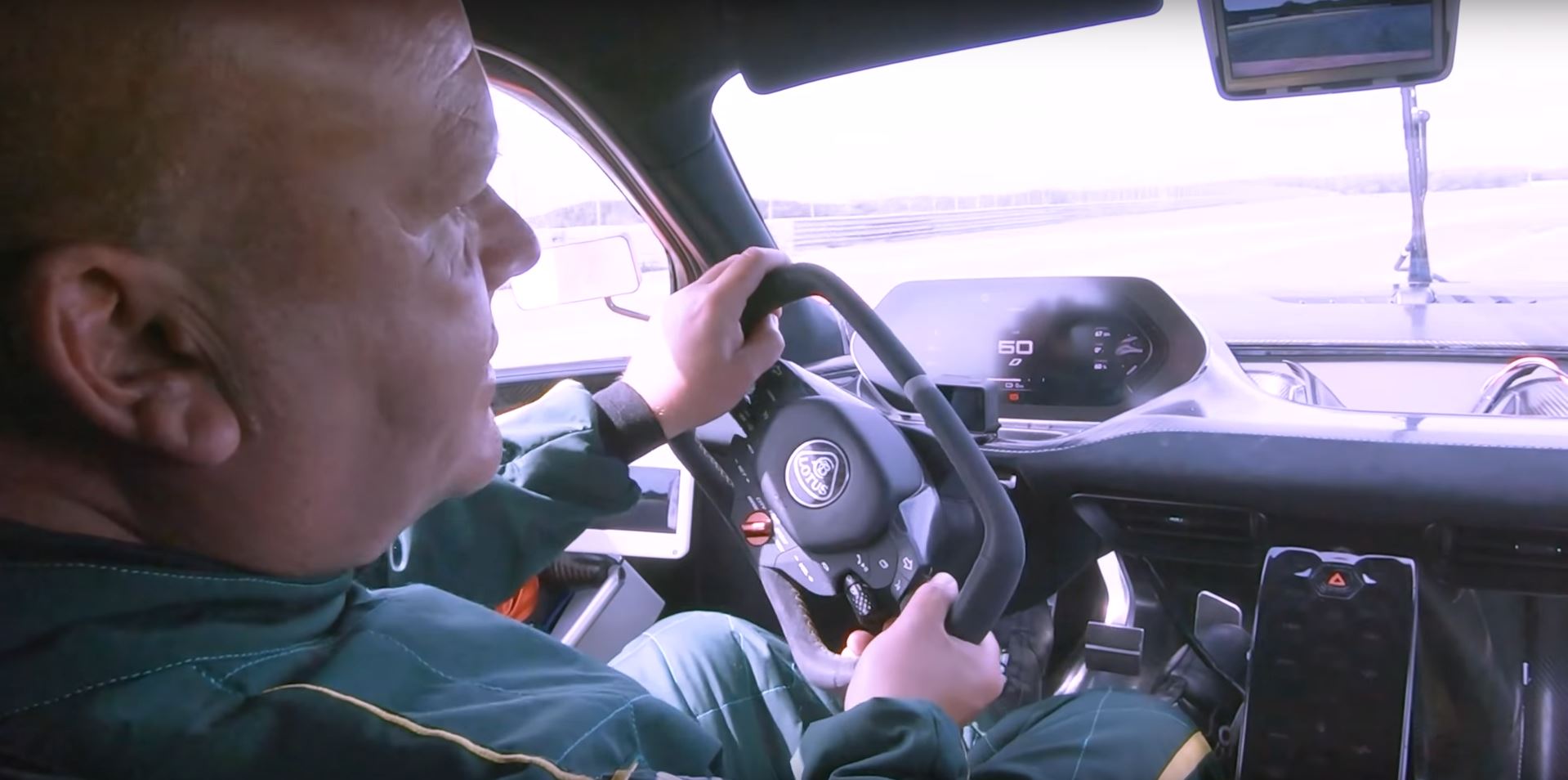
That leaves the mode that everyone wants to know about, where the dial is turned up so much it breaks off in their hand. Track mode is the full meal deal, the combo of kickass and “oh my god!” 2,000 BHP, the car actively searching for any and all traction, the brakes in full hypercar mode (and they’re carbon brakes, like in Formula 1!), all of the aerodynamics working to push the car as hard as possible into the track while also allowing it to pierce the air as efficiently as possible. And when all four of those motors are whirring away, it almost sounds the air itself is being gently but brutally sliced apart.
And, as is shown in the outro of the video, it still keeps the Lotus spirit, as Mr. Kershaw lights up the rear tires and sends it sideways around a few corners.
All we know is, the Evija is looking even more promising than we all originally thought. Bring on 2021, so we can see it in the wild!


